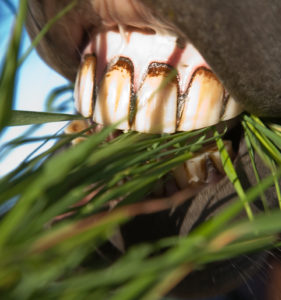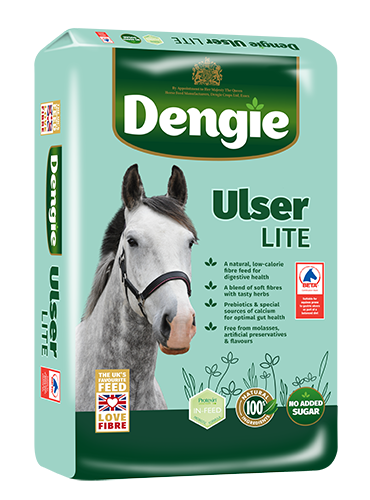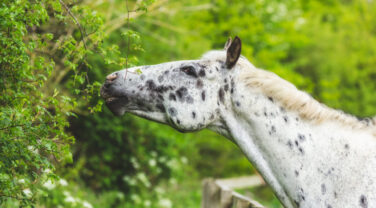Chewing, Behaviour & Digestive Health
Horses were designed to eat fibre and spend 16 to 18 hours a day in their natural environment eating. At any time when your horse is stabled for longer, it is really important to keep them chewing for as long as possible to support their behavioural and digestive health.
Chewing and behaviour
Horses in the wild evolved to eat for long periods and are believed to have a psychological need to chew. Once domesticated, meal feeding rather than trickle feeding as nature intended was introduced and, in part, is believed to influence the development of behavioural issues such as wood chewing and crib-biting.
Feed type can influence chew time. Researchers discovered that a horse will chew a kilogram of hay 3,400 times in about 40 minutes but will chew one kilogram of oats 850 times in only 10 minutes. This shows that feeding fibre takes more chews – and keeps a horse occupied for much longer!
Chewing and digestive health
A good set of teeth is vital for getting the most out of feed. This is because chewing helps to break it up into smaller particles, allowing the nutrients locked inside to be more readily extracted and absorbed.
Research has revealed that feeding fibre results in larger, slower jaw movements and more even dental wear, whereas feeding high levels of concentrates can increase the likelihood of irregularities such as the overgrowth of enamel or sharp edges.

Chewing produces saliva, which helps to lubricate the passage of food into the oesophagus. It also contains natural bicarbonates that buffer acidity in the stomach. This is particularly important for the squamous or non-glandular lining of the stomach, where gastric ulceration is most common because saliva is one of the few protection mechanisms this area has.
Saliva production is dependent on feed type and chewing time, and it is therefore no surprise that feeding a fibre diet results in greater levels of saliva production because of longer chew time.
Top tips to maximise chew time
- Make the most of good-quality forage and feed a fibre-only ration.
- Replace traditional cereal concentrates with fibre products of a similar energy level. For horses that struggle to hold weight, use more digestible fibre sources such as alfalfa and sugar beet.
- Feed little and often to mimic trickle feeding.
- Double-net hay for greedy eaters to slow the rate of intake.
- Add chopped fibre feeds if feeding mixes and cubes because adding fibre slows the rate of intake, increasing eating time.



